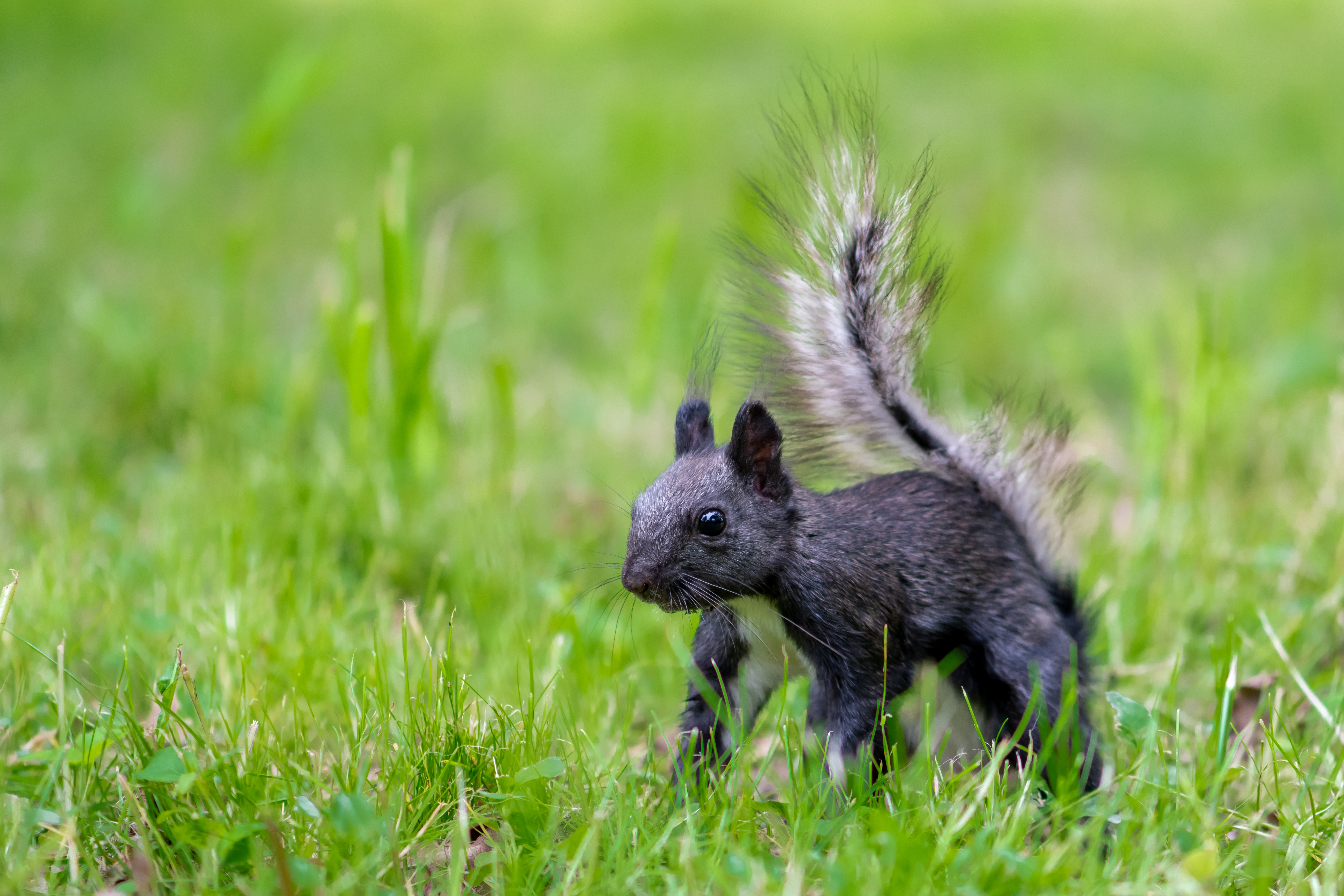Scientists Figure Out Why There Are Black Squirrels All Over the United States
It has to do with some cross-species courtships.

Biologists from the United Kingdom think they've decoded the mystery of all the gray squirrels (Sciurus carolinensis) running around the United States with black fur.
The bit of genetic code that causes the gray squirrel species to turn black, they showed, is an allele, or a variant form of a specific gene, called MC1R∆24. But that allele doesn't seem to come from gray squirrels. Instead, they showed, the gray squirrel MC1R∆24 allele is "identical" to the MC1R∆24 allele found in another species, fox squirrels (Sciurus niger) — one of two mutations that occasionally cause big, usually reddish fox squirrels to turn black. In a paper published online July 11 in the journal BMC Evolutionary Biology, the researchers showed that the color-changing allele likely originated in fox squirrels and moved over to gray squirrels through interbreeding.
To reach that conclusion, the researchers examined all three possible ways the gene variant could have turned up in both species. [The 12 Biggest 'Little' Mysteries of Fall — Solved!]
"First, the allele could have arisen in the common ancestor of both species, and been retained by balancing selection," they wrote.
In other words, because black coloring offers some advantages to squirrels (helping them stay warm in the winter, for example), it's possible that the gene is old and just stuck around as the two species diverged.
However, they wrote, over millennia of evolution, the group of alleles (called haplotypes) that included this "black fur" gene variant would have likely stopped being identical in the two species, if that were the case.
"Second, the mutation could have arisen independently in both species, but this is also unlikely as the haplotypes are identical," they wrote. "Therefore the most likely explanation is that the MC1R∆24 allele arose in one species and subsequently introgressed to the other species." [Why Do Squirrels Chase Each Other?]
Sign up for the Live Science daily newsletter now
Get the world’s most fascinating discoveries delivered straight to your inbox.
They concluded that the gene likely started in fox squirrels and moved over to gray squirrels because it more closely resembles other genes that are common in fox squirrels — but they added that they can't rule out the theory that the allele started in gray squirrels and moved in the opposite direction.
Whatever the case, they wrote, black fur remains a rare thing for squirrels in North America, occurring at rates of less than 1% in the two species. But already, they noted in a statement, it's made its way over to the United Kingdom — likely through black squirrels from the U.S. that escaped from private zoos in the U.K.
- Top 10 Species Success Stories
- 10 of the Strangest Medical Studies (in Recent History, That Is)
- 6 Extinct Animals That Could Be Brought Back to Life
Originally published on Live Science.











